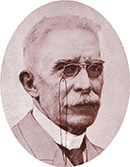Problem-Solving Activity
Recreating High Altitudes
An important chemical equilibrium in your blood involves the reaction of hemoglobin (Hb) with oxygen (O2) to form oxyhemoglobin (HbO2).
This equilibrium changes with altitude. As you move from lower to higher elevations, the concentration of oxygen in the air decreases, and the equilibrium shifts in the direction that produces less oxyhemoglobin. Your body responds to the shift by producing more hemoglobin. Studies have shown that athletes can improve their performance at sea level by living or training at high altitudes. Some training facilities are designed to recreate high altitudes. Imagine that you are asked to build such a facility.
Defining the Problem In your own words, state the problem you face.

Organizing Information Use Le Châtelier's principle to determine how high altitudes affect this equilibrium system.
Creating a Solution The physical properties of the air inside the training facility include temperature, pressure, and composition. Figure out how to shift the equilibrium in the direction you want by changing one of these properties.
Presenting Your Plan Write a proposal to an athletic team that could benefit from using your training facility. Explain how your facility recreates a high-altitude environment.
Figure 26 French Chemist Henri-Louis Le Châtelier (1850–1936) published the first version of his principle of chemical equilibrium in 1884.

Factors Affecting Chemical Equilibrium
Like reaction rates, chemical equilibria can change depending on the conditions of the reaction. While a reaction rate either increases or decreases in response to a change, an equilibrium shifts. That is, the equilibrium favors either the forward or the reverse reaction.
 When a change is introduced to a system in equilibrium, the equilibrium shifts in the direction that relieves the change. This rule was first observed by Henri Le Châtelier, shown in Figure 26. Today, the rule is known as Le Châtelier's principle.
When a change is introduced to a system in equilibrium, the equilibrium shifts in the direction that relieves the change. This rule was first observed by Henri Le Châtelier, shown in Figure 26. Today, the rule is known as Le Châtelier's principle.
The making of ammonia is an example of a process in which chemists apply Le Châtelier's principle. Ammonia is an important industrial chemical used to make fertilizers, cleaning agents, dyes, and plastics. The following equation describes the synthesis of ammonia.
Suppose you have a system that contains nitrogen, hydrogen, and ammonia in equilibrium. By applying Le Châtelier's principle, you can predict how this system will be affected by changes in temperature, pressure, and concentration. In the ammonia plant shown in Figure 27, chemists must consider these same factors.
Temperature
In the equation for the synthesis of ammonia, heat is written as a product. This tells you that the forward reaction is exothermic. In the reverse reaction, heat is a reactant. So the decomposition of ammonia is endothermic.




